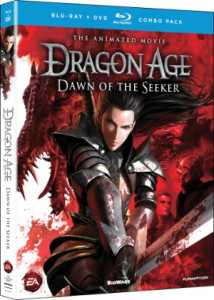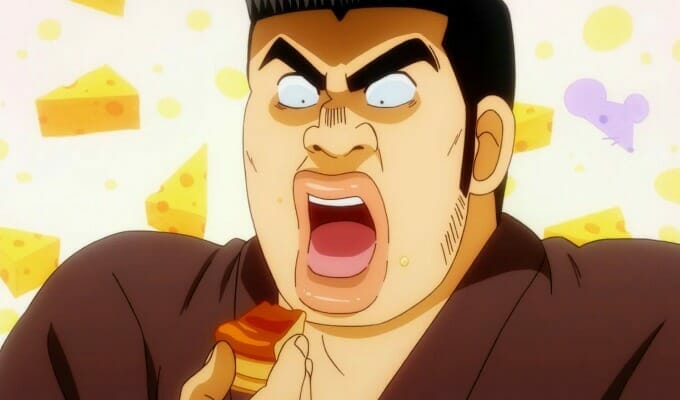 In the west, Bioware has a reputation for building worlds that seem to come alive on-screen. The company’s blend of strong storytelling and an insistence on having the player help color the narrative with their decisions. At the time of its release, Dragon Age: Origins was a welcome addition to the company’s lineup, as it brought Arthurian legends to life. The tale of the hero’s quest to rid the land of Darkspawn enthralled players, and left many begging for more. Dragon Age: Dawn of the Seeker aims to scratch the itch as it fills in a number of gaps between the franchise’s two titles. Unfortunately, the end result may end up doin more harm to the property than good.
In the west, Bioware has a reputation for building worlds that seem to come alive on-screen. The company’s blend of strong storytelling and an insistence on having the player help color the narrative with their decisions. At the time of its release, Dragon Age: Origins was a welcome addition to the company’s lineup, as it brought Arthurian legends to life. The tale of the hero’s quest to rid the land of Darkspawn enthralled players, and left many begging for more. Dragon Age: Dawn of the Seeker aims to scratch the itch as it fills in a number of gaps between the franchise’s two titles. Unfortunately, the end result may end up doin more harm to the property than good.
In the land of Orlais, an organization known as The Chantry presides over the land. to maintain the peace, the Templar Order is employed to deliver swift justice upon those who do the bidding of evil. The Seekers serve to balance the Templars’ power, as they work in the shadows to root out corruption in the ranks, and to hunt the most cunning of apostate mages. Cassandra is a Seeker like no other. Her skills with the blade and peerless beauty make her a prime candidate for advancement in the organization. Cassandra’s career is cut short, though, when a secret mission goes awry. An attempt to sneak an elven girl to safety is quickly compromised, leading to the capture of the girl and the death of her mentor. Cassandra quickly becomes embroiled in a tale of danger and skullduggery, as she learns that the girl has the ability to control dragons. The Blood Mages that captured the girl intend to use her to launch an attack on the Chantry in order to bring about a new era of magical domination, and only Cassandra can stand in their way.
If the description wasn’t enough of an indicator, Dawn of the Seeker is a half-baked, barely-coherent mess of a film that barely manages to tell a story, let alone engage the viewer. The cast is presented as a series of wooden mannequins that the viewer is supposed to feel for, by virtue of their receiving screen time. Be it Cassandra, the brash, over-confident, all-round tough-girl or smooth-talking Circle Mage Galyan, much of the cast seems to merely exist for the purpose of providing talking set pieces. They do little to engage or endear the viewer, and rarely step out of the neat archetypes in which they’re introduced. Frenic, the film’s villain, seems like he would be better suited to the Saturday morning cartoon rolls as he displays the same one-track mind and love of grand displays that would befit the likes of Skeletor or The Shredder than that of an oppressed practitioner of the dark arts.
The plot itself is a by-the-numbers “save the world” affair, told with the subtlety of a screaming lunatic. From the outset, it’s obvious as to what will happen to Cassandra, how much danger the protagonists will face, and even what twists will occur. Frankly, this would be somewhat tolerable if not for the fact that the writers felt the need to pull away from the main narrative every few minutes. In these intervals, viewers are subjected to dry, drawn-out dialogues between the Divine and her consorts. While it’s clear that these scenes were created with the intent of delivering a different perspective on the matter, they mainly serve as a way to suck the oxygen from the room and kill any momentum that built up in the meantime. Even as the epic final showdown begins, most will be left wondering if they’ll actually be allowed to watch something interesting, for once, or if the Divine will somehow rise from the chaos and start lecturing random evildoers about the Chant of Light.
The film’s poor story is exacerbated by a visual style that aims to capture elements of eastern and western art, but somehow fails at both. Many of the film’s wildlife and structures are rendered in a realistic style that one would likely see in western animation. Animals are anatomically correct, and buildings aim to capture the details of a medieval abode. For some elements, the style works magnificently. In particular, the dragons that appear in the film are impressive to behold, as their wings beat and the details on their scales seem to be expressed at every opportunity. Corners were clearly cut, as certain elements begin to look strangely unnatural through the course of the film. Trees shine in the moonlight of darker scenes, and horses’ asses somehow emit a magnificent gleam. Exterior scenes, particularly later in the film, begin to look stark and uninspired, as building colors begin to be replaced by an oppressive white.
Characters are presented in a style reminiscent of the 2004 Appleseed film, if Appleseed were made with a fraction of its budget. Characters are presented in the same “pseudo-3D” style, in which anime-inspired character designs are forced onto 3D models. While they don’t look terrible, the chunky polygonal hair and unusual lighting make it clear that the budget used elsewhere. The character themselves move about like soulless robots, with stiff gaits and stilted, unnatural interactions with the environment. The awkward movement turns the numerous battle scenes into boring, mechanical affairs as the inhuman automatons run through their uninspired choreography.
While Dragon Age fans may find some value in Dawn of the Seeker, many will find the film to be simply too much of a chore to enjoy. The awkward pacing and the generally weak plot would be enough to sink this on their own, but the clashing visual styles and generally poor animation drive the film to a completely new level of horrid. With the rich world and characters of Dragon Age, it’s hard to tell which is more heartbreaking, though: that the next game is so far away, or that customers will have to make do with Dawn of the Seeker in the mean time.
Dragon Age: Dawn of the Seeker is distributed in America by FUNimation.
The series can be purchased at Right Stuf.
Thanks to FUNimation for providing a review copy!











